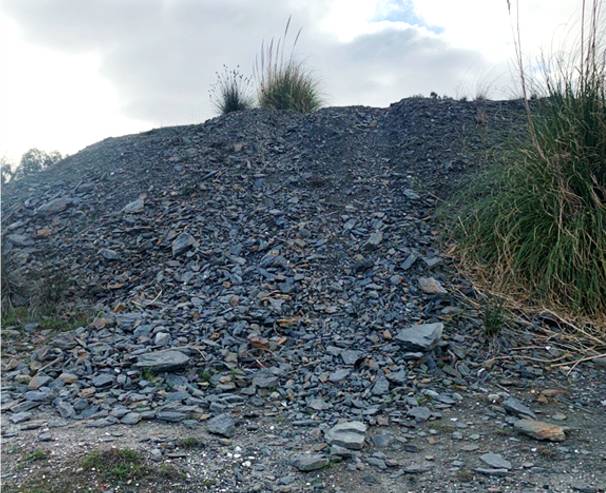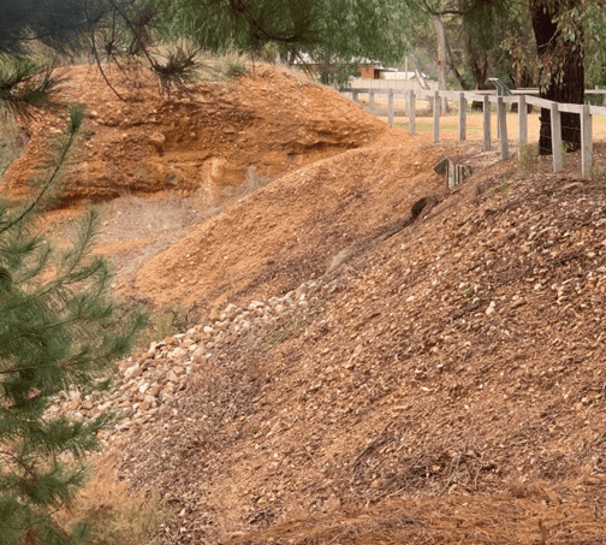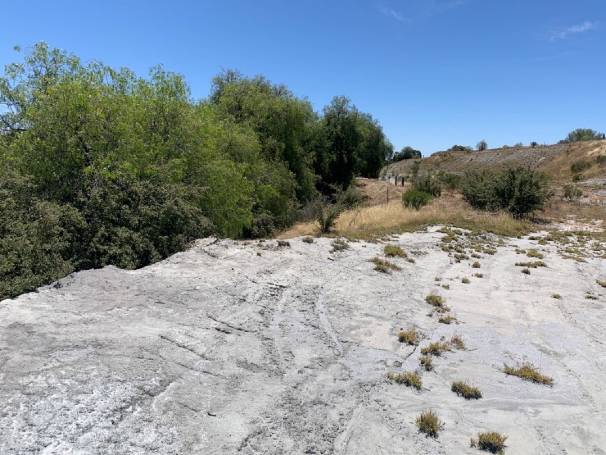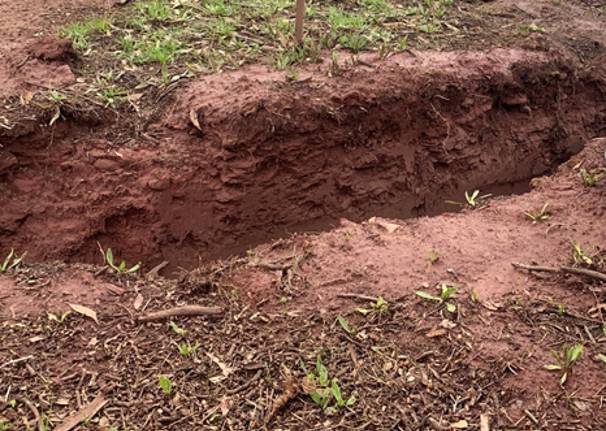Mining waste from historical gold processing can contain arsenic, lead and mercury in high concentrations. Arsenic can be present in the highest concentration. Arsenic also poses the greatest risk to human health and the environment.
In the 1800s and the early part of the 1900s, mining waste was often left at or just below the surface.
If you live or work in an area where there has been historical mining, be aware of the mining wastes you may come across.
Waste rock
Waste rock (mullock) can appear:
- spread out in piles on the surface
- buried below the surface
- in the form of large boulders.
Typically, waste rock has not been processed enough to contain concerning levels of contaminants.
It's commonly found:
- with, or near, mining sands
- near shafts, horizontal mine tunnels (adits) and ore processing areas.
Worked alluvium
Worked alluvium comes from historical sluicing (placer mining). This is where people used water to wash away stream beds or banks to expose alluvial gravels, then flushed the gravels through sluice boxes to separate any gold. Worked alluvium is the gravel that remains after this process.
Worked alluvium is typically made up of silts and gravelly stones. It can include quartz, ironstone and weathered pieces of siltstone or sandstone.
Mining sand
Mining sand was produced when rock was brought to the surface and crushed.
Its colour reflects the geology of the rock. In the Bendigo region, mining sand is mostly grey in colour. It has a fine particle size, like fine beach sand.
Mining sand can contain elevated concentrations of heavy metals like arsenic, lead, mercury and antimony. It can also contain processing chemicals, such as cyanides and flocculants.
Calcined sand
Calcined sand has a similar texture to mining sand but is a pink-purple-red colour. The calcination process gave the sand its distinctive colouring and ash-like appearance. Its colour makes it stand out from the surrounding landscape.
Calcined sand is extremely high in arsenic and is likely to have high levels of lead and mercury.
Updated





